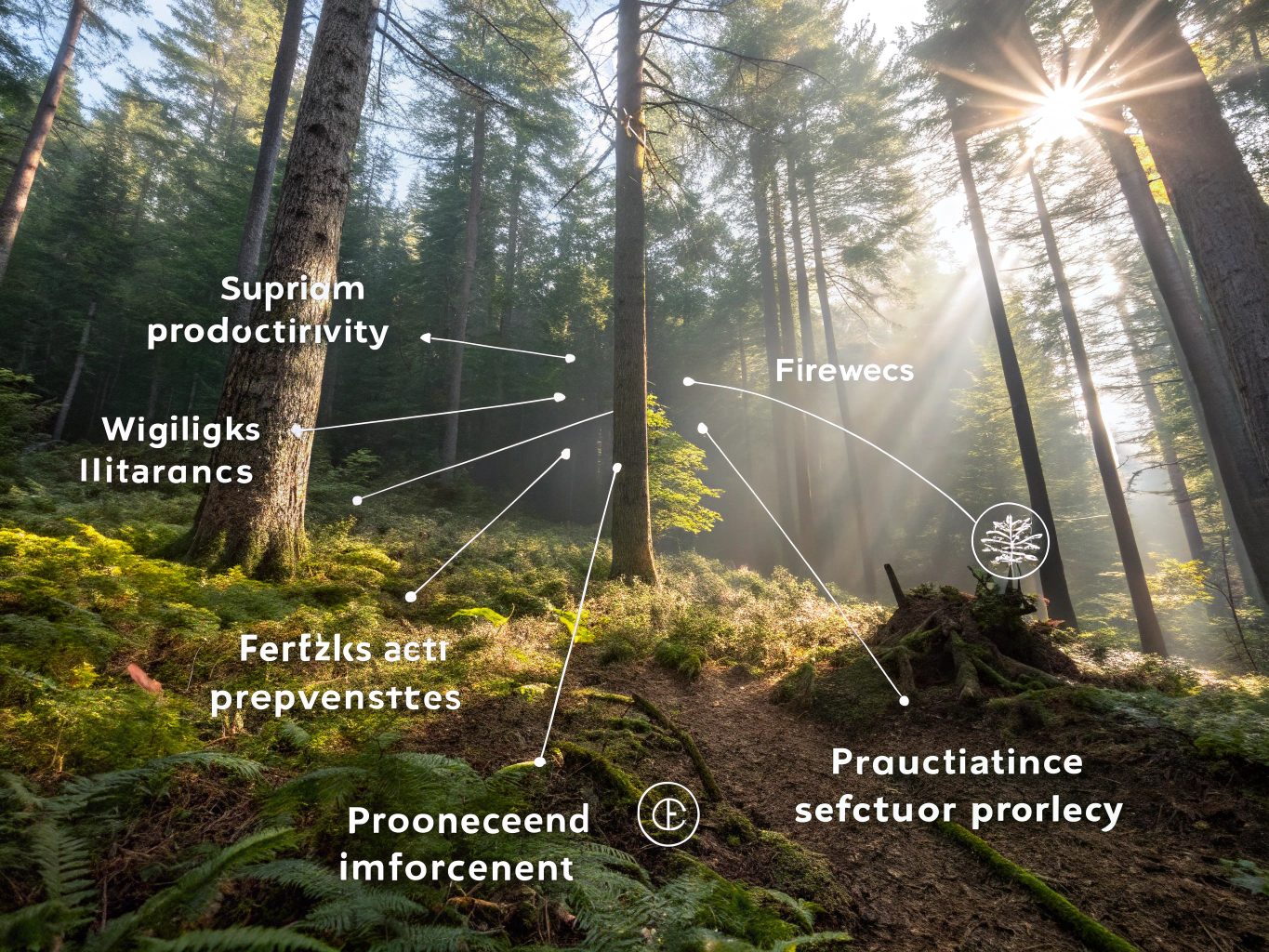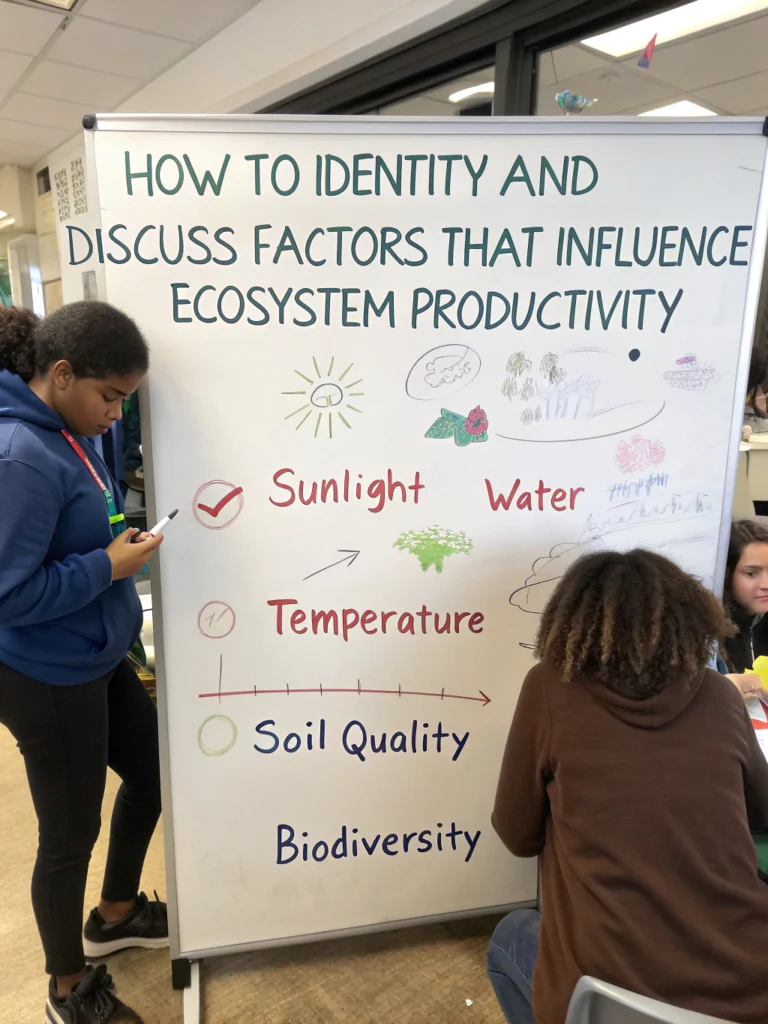How to Identify and Discuss Factors That Influence Ecosystem Productivity
If you’re curious about the natural world, you’ve probably wondered how ecosystems thrive and why some are more productive than others. This understanding isn’t just interesting; it’s vital for improving our environment and ensuring sustainability. Let's dive into how to identify and discuss factors that influence ecosystem productivity, while examining the historical, environmental, and biological aspects involved.
What Is Ecosystem Productivity?
Ecosystem productivity refers to the rate at which energy is produced and consumed within an ecosystem. This crucial metric is usually assessed through primary productivity in ecosystems, which is the amount of organic material created by plants during photosynthesis. High productivity often results in a rich variety of life and a healthier ecosystem.
Key Ecosystem Productivity Factors
To get a grip on ecosystem productivity, we need to break it down into several ecosystem productivity factors:
-
Abiotic Factors
- Light Availability: Plants need sunlight for photosynthesis. The more sunlight in an area, the higher the primary productivity.
- Water Supply: Adequate moisture is essential. Too little water can stunt plant growth and limit ecosystem productivity.
- Nutrient Availability: Nitrogen, phosphorus, and potassium are all vital for plant growth. If soil lacks these nutrients, you see a decline in productivity.
-
Biotic Factors
- Plant Diversity: More diverse plant communities often lead to more robust ecosystems as different species utilize resources differently.
- Animal Interactions: Herbivores and pollinators can significantly influence plant growth and ecosystem health by affecting which plants thrive.
Environmental Influences on Ecosystems
The environment plays a crucial role in determining how ecosystems operate. Urbanization, climate change, and habitat destruction are just a few environmental influences on ecosystems that can decrease productivity levels:
- Climate Change: Rising temperatures and altered precipitation patterns can drastically shift productivity.
- Pollution: Contaminants in air and water can harm both abiotic conditions and living organisms, further hampering productivity.
How to Measure Ecosystem Productivity
Measuring ecosystem productivity might sound complex, but it revolves around a few methods:
- Carbon Flux Measurements: This method tracks the amount of carbon dioxide absorbed by plants for photosynthesis.
- Remote Sensing Techniques: Satellites and drones can provide data on vegetation health and biomass.
- Biomass Measurement: Researchers often weigh living organisms in a particular area to estimate productivity.
Improving Ecosystem Health
Recognizing these ecosystem productivity factors allows for more informed decisions. But how can we apply this knowledge to enhance our surroundings?
- Restoration Projects: Rehabilitating degraded areas by reintroducing native plant species and controlling invasive species can boost productivity.
- Sustainable Practices: Applying organic farming techniques can improve soil health and support ecosystem balance.
Future Trends: Ecosystem Productivity 2025
As we look towards ecosystem productivity 2025, we must focus on technology and community action. Innovations in agricultural practices, recycling of resources, and renewable energy usage could drastically improve ecosystem health. Adapting to environmental changes and engaging local communities in conservation efforts will also be pivotal.
Conclusion
To truly understand ecosystems and their productivity, we need to identify and discuss factors that influence ecosystem productivity. By recognizing how abiotic and biotic elements interact with environmental influences, we can take significant steps toward enhancing ecosystem health and sustainability.
Are you interested in increasing productivity in your daily life too? Check out the AI for Productivity eBook + Checklist: Supercharge Your Efficiency in 2308, packed with tools and tips to boost your efficiency.
And if you struggle with focus, consider enhancing your organizational skills with the ADHD Productivity Power Pack: Ebooks, Guides, Checklists, Workbook & Tools to Master Focus, Time Management & Organization.

FAQs
What are the primary factors influencing ecosystem productivity?
The primary factors include abiotic elements like sunlight, water, and nutrients, as well as biotic factors such as plant diversity and animal interactions.
Can ecosystem productivity be restored?
Yes, through restoration projects and sustainable practices, ecosystem productivity can be improved.
How is ecosystem productivity measured?
It can be assessed using carbon flux measurements, remote sensing techniques, and biomass measurements.
Embrace this knowledge, share it with your friends, and let's work together to keep our ecosystems thriving!

